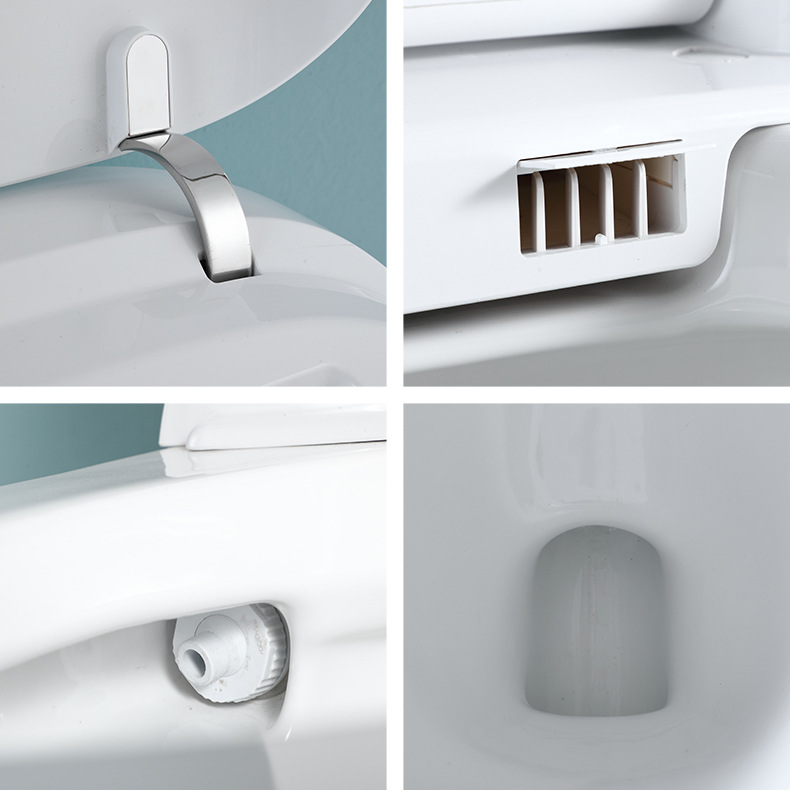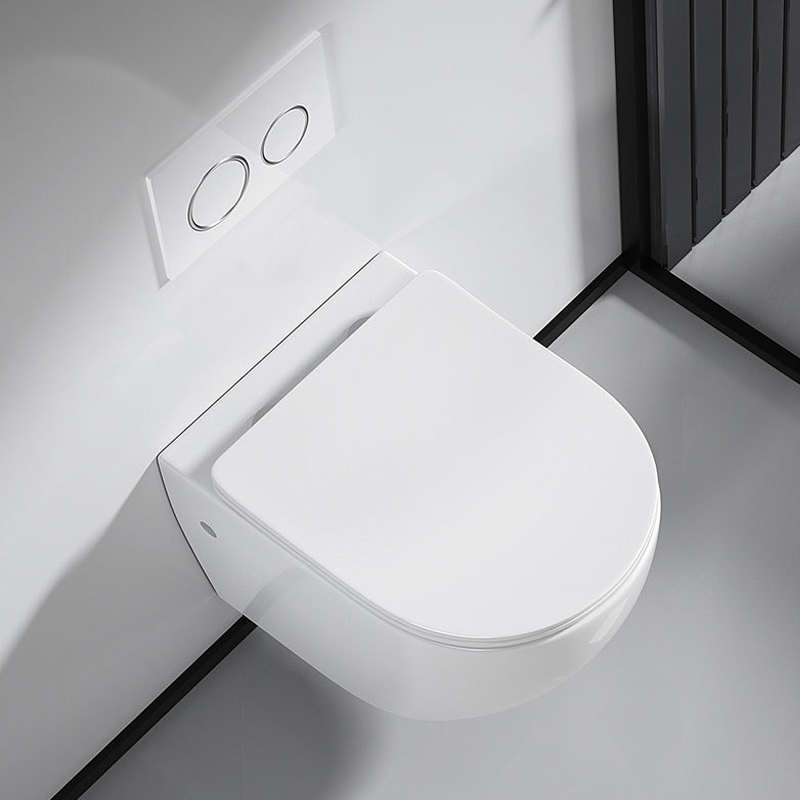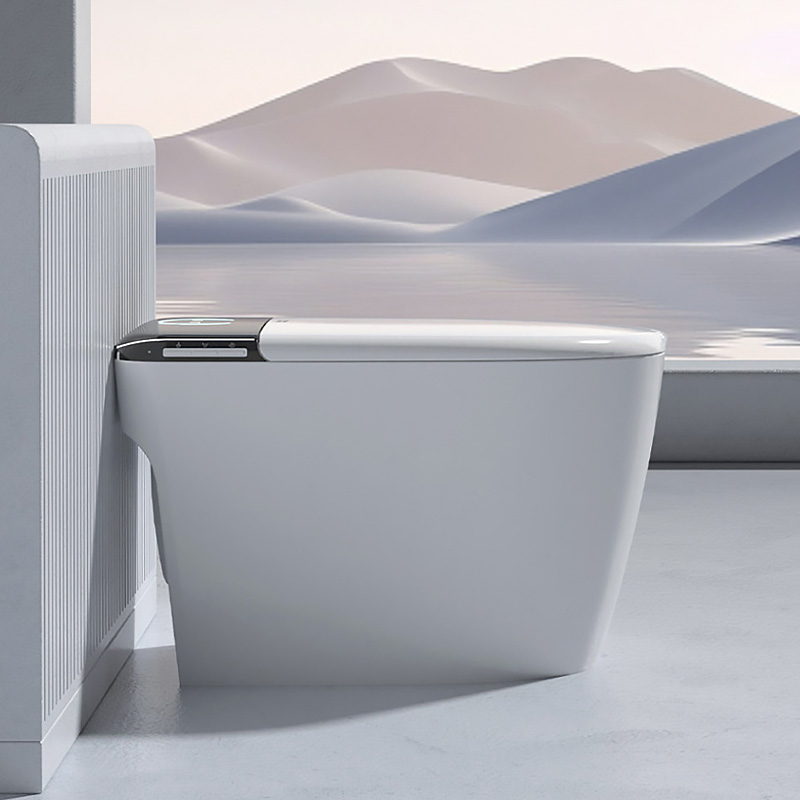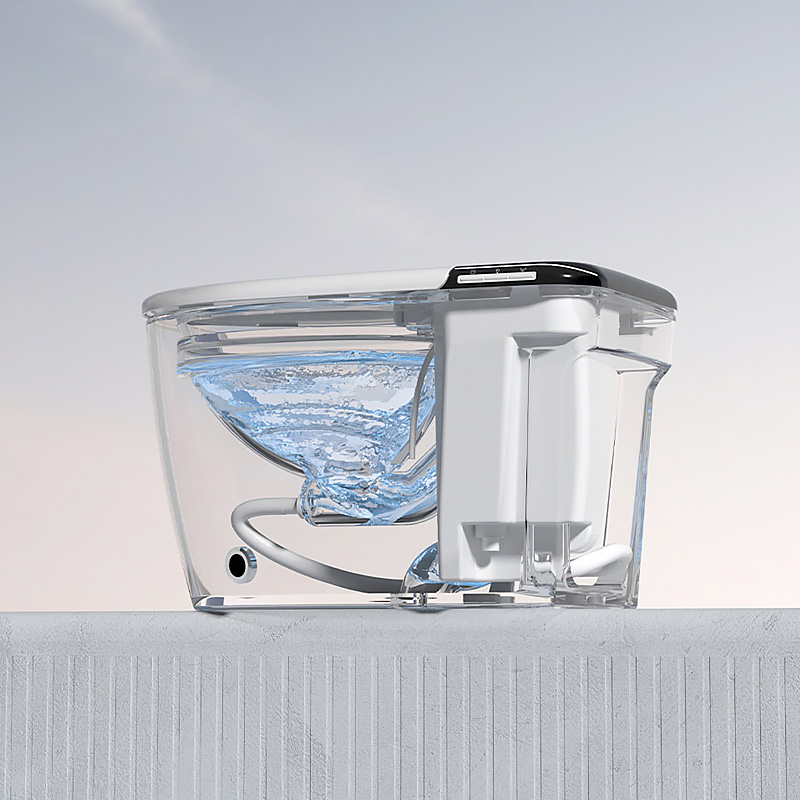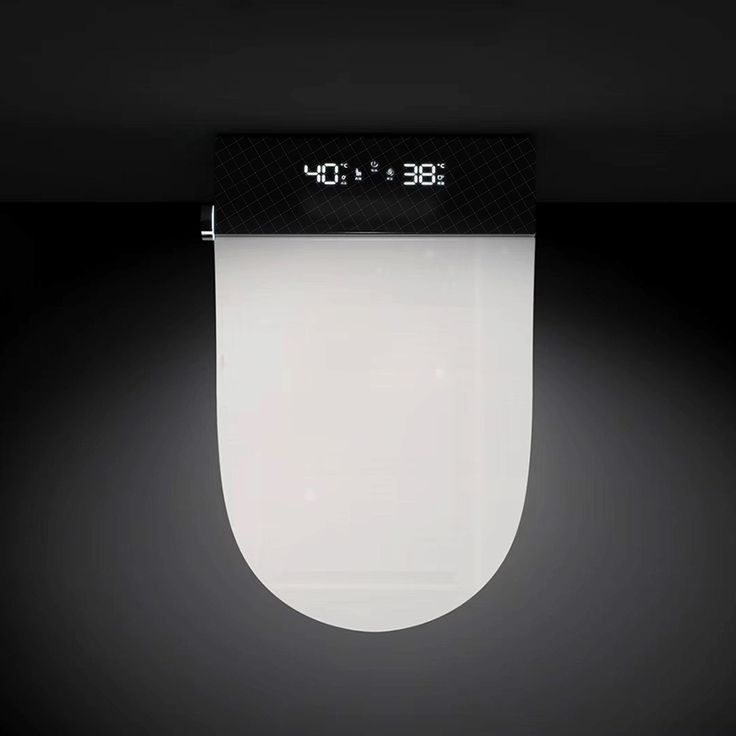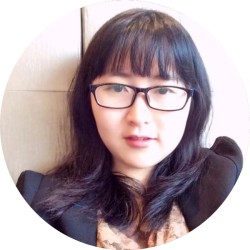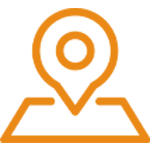 English
English
Jabra Sanitary is a sanitaryware supplier offering toilets, sinks, faucets, bathtubs, etc., at competitive prices. If you're a distributor, wholesaler, or project contractor, get a quote today!
 $23.9 Limited-time Offer
$23.9 Limited-time Offer Consignment Policy
Consignment Policy 20 Years of Experience
20 Years of Experience
In recent years, the smart home concept has expanded beyond lighting, security, and entertainment systems to include even the bathroom.
One of the most innovative advancements in this space is the smart toilet. These technologically advanced toilets are designed to enhance comfort, hygiene, and convenience, making them a key component of modern living.
Whether you're looking to upgrade your bathroom or simply curious about the latest home tech, understanding smart toilets is essential. Read on to learn what's a smart toilet, what a smart toilet does, how to use a smart toilet, how to install a smart toilet, how to clean smart toilet, how much is a smart toilet, and are smart toilets worth it.

Table of Contents
What Is a Smart Toilet
What Does a Smart Toilet Do?
How to Use a Smart Toilet
How to Install a Smart Toilet
How to Clean a Smart Toilet
How Much Is a Smart Toilet?
Are Smart Toilets Worth It?
Best Smart Toilets
Traditional Toilets vs. Smart Toilets
Final Thoughts
A smart toilet is an advanced bathroom fixture, with features like automatic flushing, bidet functions, heated seats, and remote controls, designed to enhance comfort, hygiene, and convenience.
Smart toilets are designed to provide a more personalized and comfortable bathroom experience while also promoting better hygiene. The evolution from traditional toilets to smart toilets represents a significant shift in how we think about bathroom design and functionality.
A smart toilet offers various functionalities, including self-cleaning, remote control operation, bidet features, heated seats, deodorizing, and night lighting, providing a personalized and comfortable bathroom experience.
The inner workings of a smart toilet are a fascinating blend of engineering and technology. At the core of these smart toilets lies a sophisticated system of sensors and electronic components that work in tandem to deliver the desired functionalities.
The brushless DC (BLDC) motor technology is often used to power essential smart toilet functions, such as water pumps, flushing systems, and automated lid movements, enhancing performance and user experience.
These motors operate with high efficiency, low noise, and durability.
Self-Cleaning Features
One of the most appealing aspects of a smart toilet is its self-cleaning capability. Many smart toilets come equipped with self-cleaning nozzle for additional hygiene and automatic cleaning systems that use UV light or electrolyzed water to disinfect the bowl after each use.
This reduces the need for harsh chemical cleaners and ensures a more sanitary environment.
Remote Control Features
Smart toilets often include a remote control or smartphone app that allows users to customize their experience.
From adjusting the water pressure of the bidet to setting the temperature of the seat, remote control features provide a high level of convenience and personalization.
Automatic Lid and Automatic Flushing
With an automatic lid, the toilet opens or closes without any physical contact, offering a completely touch-free experience. Smart toilets are equipped with sensors that detect when you leave, triggering an automatic flush.
Bidet Functionality
Bidets have long been a popular feature in many parts of the world, and smart toilets bring this functionality to the next level.
With adjustable water pressure, temperature, and even oscillating sprays, the bidet function of a smart toilet ensures a thorough and comfortable cleaning experience.
Heated Seats
For those chilly mornings, heated seats are a welcome feature of many smart toilets. Users can set their preferred temperature, ensuring a cozy experience every time they use the toilet.
Water Efficiency
Smart toilets are designed with sustainability in mind. Many models feature dual-flush systems that use significantly less water than traditional toilets.
This not only helps reduce your water bill but also contributes to environmental conservation.
Deodorizing Functions
Some smart toilets are equipped with built-in deodorizing systems that automatically neutralize odors. These systems often use carbon filters or other advanced technology to keep your bathroom smelling fresh.
Night Lighting
Nighttime bathroom visits are made easier with the soft, ambient lighting found in many smart toilets. This feature is particularly useful for those who don't want to disturb others by turning on bright overhead lights.
Foam Shield Function
The Foam Shield function is another innovative feature found in some smart toilets. This feature generates a layer of foam inside the bowl, which helps to prevent splashing and reduce noise, ensuring a more pleasant experience.
Using a smart toilet might seem intimidating at first, especially with all the advanced features it offers, but it's designed for ease of use. Here's a simple guide to help you get started:
Step-by-Step Guide
1. **Approach the Toilet:** Many smart toilets have sensors that detect when someone is near, automatically lifting the lid for you.
2. **Adjust Settings:** Use the remote control or the side panel to adjust settings like seat temperature, bidet spray, and water pressure according to your preferences.
3. **Use the Bidet Function:** After using the toilet, press the bidet button to activate the cleaning spray. You can adjust the position, pressure, and temperature of the water for a customized experience.
4. **Flush Automatically:** Most smart toilets will flush automatically when you stand up. If manual flushing is needed, you can use the remote control or a flush button on the side panel.
5. **Use the Dryer:** Some models include a built-in dryer, which you can activate after using the bidet to dry yourself comfortably.
Tips for First-Time Users
If you're new to smart toilets, take some time to familiarize yourself with the remote control or control panel. Experiment with different settings to find what works best for you. Don't worry about getting it perfect right away; smart toilets are designed to be intuitive and user-friendly.
How to Install a Smart Toilet
Installing a smart toilet is a more involved process than installing a traditional toilet, but it can be done with the right tools and instructions.
Installing a smart toilet involves turning off the water supply, removing the old toilet, preparing the area, installing the new toilet, connecting the water and power supply, and testing the unit for proper operation.
Here's how to go about it:
Pre-Installation Checklist
Before you begin, gather the necessary tools and materials. You'll need a wrench, screwdriver, level, plumber's tape, and possibly some additional plumbing fittings depending on your bathroom's setup. Ensure the area is clean and ready for installation.
Step-by-Step Installation Process
1. **Turn Off the Water Supply:** Start by turning off the water supply to your current toilet. This is typically done by closing the shutoff valve located behind the toilet.
2. **Remove the Old Toilet:** Disconnect the water supply line, then unbolt the old toilet from the floor. Carefully remove it and set it aside.
3. **Prepare the Area:** Clean the area where the old toilet was, and check the flange to ensure it's in good condition. If necessary, replace the flange before proceeding.
4. **Install the Smart Toilet:** Place the new smart toilet in position, aligning it with the bolt holes. Secure it to the floor using the provided bolts, making sure it sits level.
5. **Connect the Water Supply:** Attach the water supply line to the smart toilet, using the plumber's tape on the threads to prevent leaks. Turn on the water supply and check for leaks.
6. **Connect the Power Supply:** Most smart toilets require a power source. If your bathroom doesn't have a nearby outlet, you may need to have one installed by an electrician.
7. **Test the Toilet:** Once everything is connected, test the toilet to ensure all functions are working properly. Check the flushing mechanism, bidet, and other features to make sure they operate as expected.
Post-Installation Tips
After installation, keep an eye on the toilet for any leaks or issues. It's also a good idea to review the user manual to familiarize yourself with any maintenance tips or troubleshooting advice.
How to Clean a Smart Toilet
Maintaining a clean smart toilet is essential for ensuring its longevity and proper function. While many smart toilets have self-cleaning features, regular manual cleaning is still necessary.
To clean a smart toilet, use a soft cloth and mild cleaner for the exterior, a gentle toilet cleaner for the interior, and regularly maintain sensors and electronics to ensure proper functionality.
Cleaning the Exterior
To clean the exterior, use a soft cloth and a mild, non-abrasive cleaner. Wipe down the surface gently to remove any dust, smudges, or stains.
Avoid using harsh chemicals that could damage the finish or affect the toilet's sensors.
Cleaning the Interior
The interior of the toilet bowl can be cleaned using a toilet brush and a gentle toilet cleaner. For models with a self-cleaning function, you may simply need to activate the feature.
However, occasional manual cleaning is recommended to ensure thorough sanitation.
Maintaining the Sensors and Electronics
Smart toilets are equipped with various sensors and electronic components that need to be kept clean and dry.
Use a dry cloth to gently wipe down any sensors, and be cautious not to expose them to excessive moisture. Regularly check the user manual for specific maintenance instructions for your model.
How Much Is a Smart Toilet?
The price of a smart toilet can vary widely depending on the features, brand, and overall quality. While they are generally more expensive than traditional toilets, the range of prices offers options for different budgets.
Price Range Overview
Smart toilets typically start at around $200 for basic models and can go up to $3,000 or more for high-end versions.
The more advanced the features—such as customizable bidet settings, heated seats, or built-in deodorizers—the higher the price.
Factors Influencing Cost
Several factors influence the cost of a smart toilet:
**Features:** The more features a smart toilet has, the more expensive it will be. Key features like automatic flushing, remote controls, and self-cleaning functions add to the price.
**Brand:** Premium brands such as TOTO, Kohler, American Standard, and Jabra Sanitary often come with a higher price tag due to their reputation for quality and durability.
**Installation Costs:** The cost of installation can also add to the overall expense, especially if electrical work is needed to provide power to the toilet.
Comparing Costs with Traditional Toilets
While traditional toilets typically range from $100 to $300, smart toilets represent a significant investment.
However, the added convenience, hygiene, and water-saving features can offer long-term value. For those considering a switch, it's important to weigh the upfront cost against the potential benefits.
Are Smart Toilets Worth It?
Investing in a smart toilet is a decision that depends on individual needs, preferences, and budget.
To determine if a smart toilet is worth the cost, it's important to consider the benefits and drawbacks.
Cost vs. Benefits Analysis
Smart toilets offer numerous benefits, including enhanced hygiene, comfort, and convenience. Features like bidets, heated seats, and self-cleaning functions can improve your daily routine.
Additionally, the water-saving capabilities of smart toilets can lead to lower utility bills over time. However, these benefits come at a cost, and it's important to consider whether the price aligns with your budget and needs.
User Experiences
Many users report high satisfaction with their smart toilets, particularly appreciating the bidet function, heated seats, and automated features.
For some, the convenience and luxury justify the higher price. However, others may find that the added features are not essential, especially if they are content with their traditional toilet.
Environmental Impact
Smart toilets are designed with sustainability in mind. Their water-saving features, such as dual-flush systems, can significantly reduce water usage.
This not only benefits the environment but also contributes to lower water bills. If environmental impact is a priority for you, a smart toilet may be a worthwhile investment.
Potential Drawbacks
While smart toilets offer many benefits, there are also potential drawbacks to consider:
**Cost:** Smart toilets are significantly more expensive than traditional toilets, both in terms of initial purchase price and potential installation costs.
**Maintenance:** The advanced features of a smart toilet may require more maintenance and occasional repairs.
**Learning Curve:** Some users may find the array of features and controls overwhelming at first.
In summary, smart toilets are worth it for those who value enhanced hygiene, comfort, and convenience. They offer long-term benefits, including water savings and improved bathroom experiences, although they come at a higher initial cost.
Best Smart Toilets
With a wide range of smart toilets on the market, choosing the best one can be challenging. Here are some top smart toilets for 2025, each offering unique features and advantages.
1. **TOTO Neorest NX2:** A high-end model known for its luxurious features, including a warm air dryer, automatic lid, and advanced bidet functions. It's one of the most sought-after smart toilets for those looking for the ultimate bathroom experience.
2. **Kohler Veil Intelligent Toilet:** This model offers a sleek design and features like a dual-flush system, automatic deodorizer, and customizable settings via a remote control. It's perfect for those seeking a blend of style and functionality.
3. **Jabra Smart One Piece Toilet J-2201:** A more affordable option that doesn't skimp on features. It includes a heated seat, powerful bidet functions, and an energy-saving mode, making it a great value for the price.
Features Comparison
When comparing smart toilets, consider the features that matter most to you.
High-end models like the TOTO Neorest NX2 offer all the bells and whistles, but mid-range options like the Jabra Smart One Piece Toilet provide excellent value with essential smart features.
Focus on aspects like bidet functionality, seat heating, and self-cleaning capabilities to find the model that best suits your needs.
Where to Buy
Smart toilets can be purchased from a variety of retailers, both online and in-store. Reputable brands are available at home improvement stores like Home Depot and Lowe's, as well as online platforms such as Amazon.
For high-end models or wholesale toilets, consider purchasing directly from the toilet manufacturer to ensure authenticity and access to warranty services.
Traditional Toilets vs. Smart Toilets
When comparing traditional toilets to smart toilets, it's clear that each has its own set of advantages and drawbacks. Here's how they stack up against each other.
Side-by-Side Comparison
**Functionality:** Traditional toilets offer basic functionality, including flushing and standard hygiene, whereas smart toilets provide advanced features such as bidet functions, heated seats, and automated cleaning.
**Cost:** Traditional toilets are significantly less expensive upfront. However, smart toilets, despite their higher cost, offer long-term benefits such as water savings and enhanced comfort.
**User Experience:** Smart toilets deliver a more comfortable and hygienic experience with features like night lighting and deodorization, while traditional toilets require more manual cleaning and maintenance.
Why Upgrade?
Upgrading to a smart toilet can significantly improve your bathroom experience. The combination of comfort, convenience, and enhanced hygiene makes it a worthwhile investment for many homeowners.
Additionally, the water-saving features contribute to environmental sustainability and can lead to cost savings over time. If you value these aspects, a smart toilet is an excellent upgrade from a traditional model. Start to buy a smart toilet for bathroom upgrade now.
Final Thoughts
Smart toilets represent a significant leap forward in bathroom technology, offering a blend of comfort, convenience, and hygiene that traditional toilets can't match.
While the initial investment is higher, the long-term benefits—including water savings, enhanced cleanliness, and added luxury—make smart toilets an appealing choice for modern homeowners.
Whether you're building a new home, renovating your bathroom, or simply looking to upgrade your current setup, a smart toilet is worth considering.
Ultimately, the decision should align with your budget, preferences, and bathroom needs. With a wide range of options available, there's a smart toilet out there for everyone.







